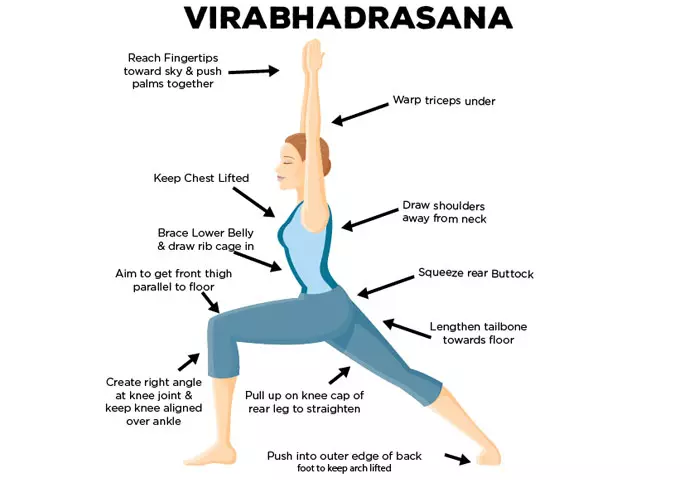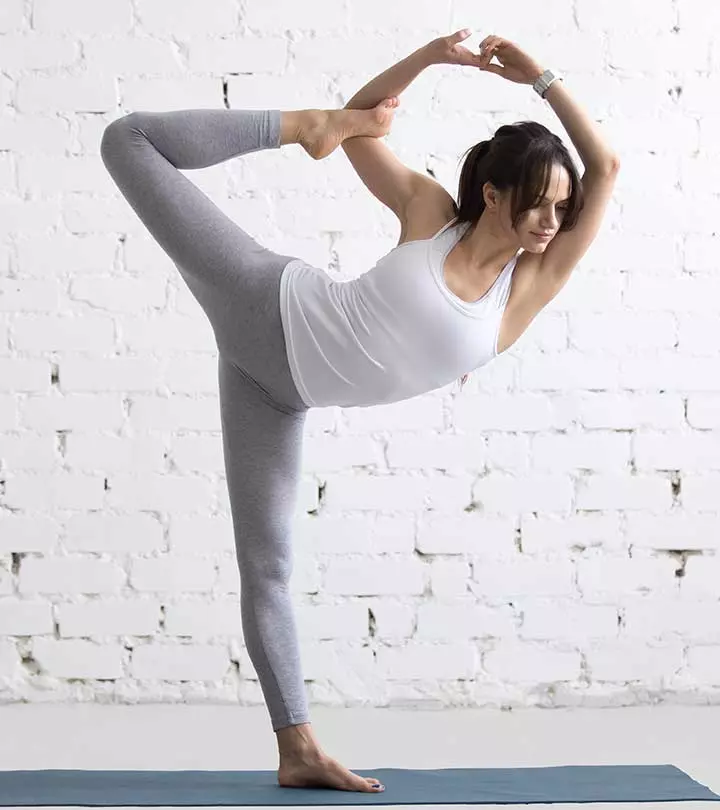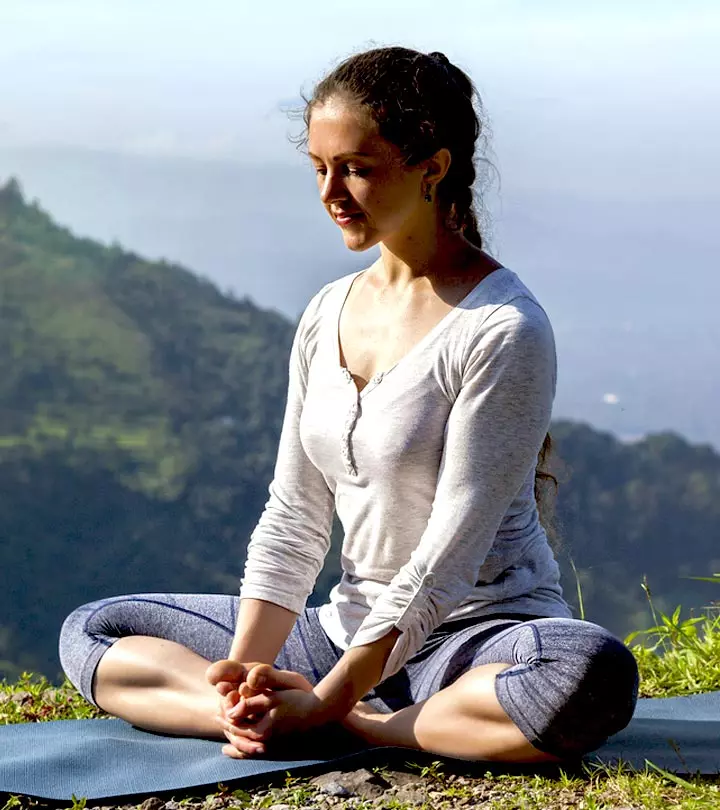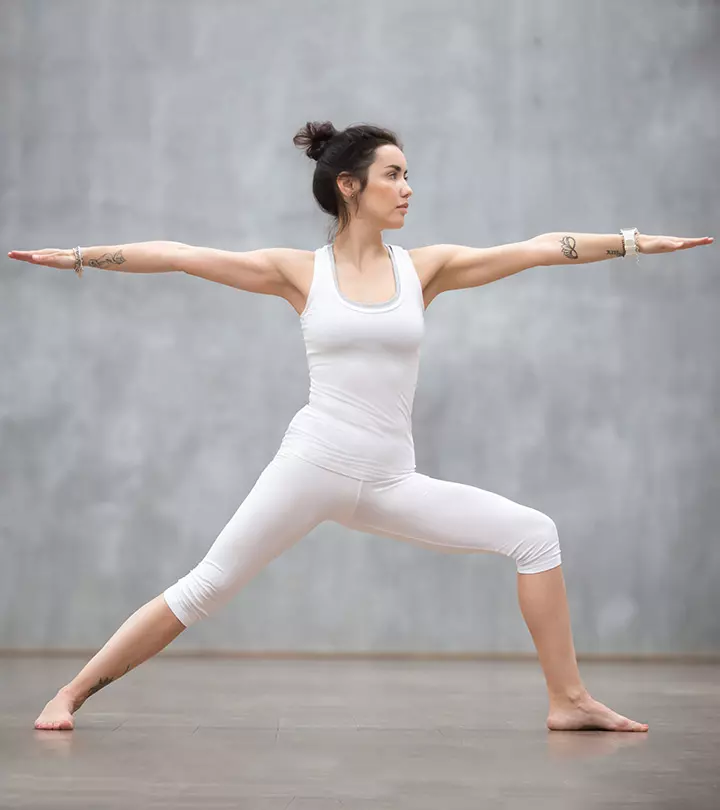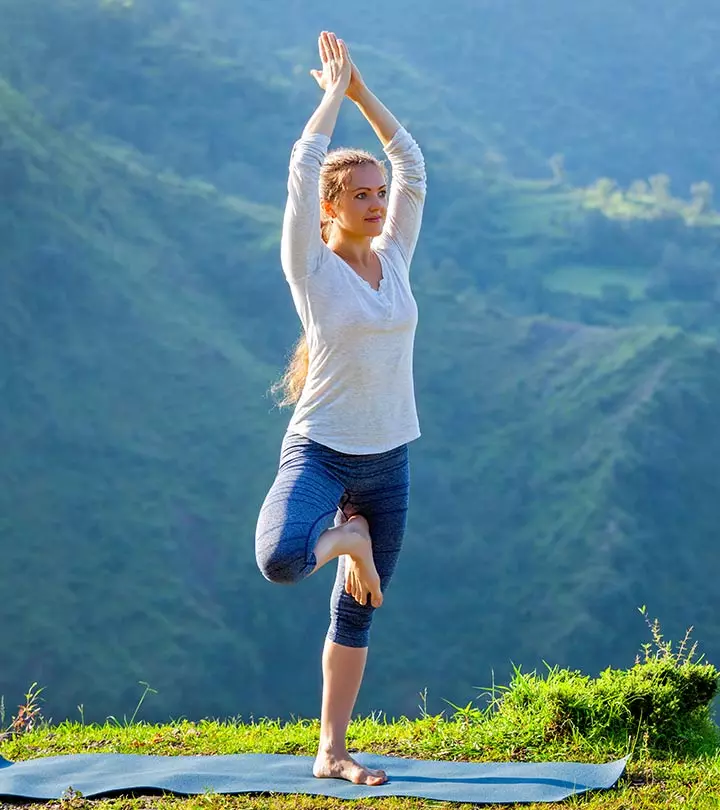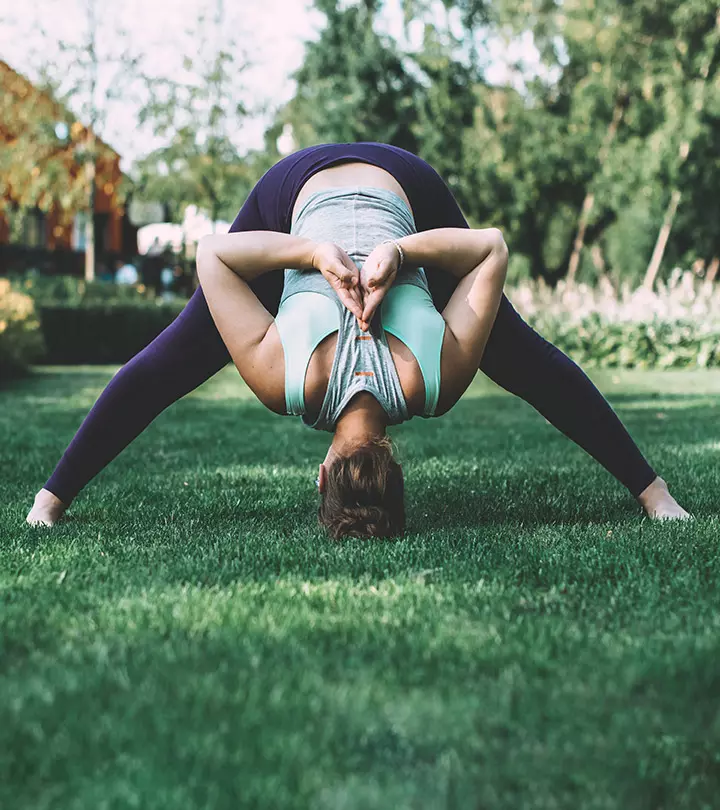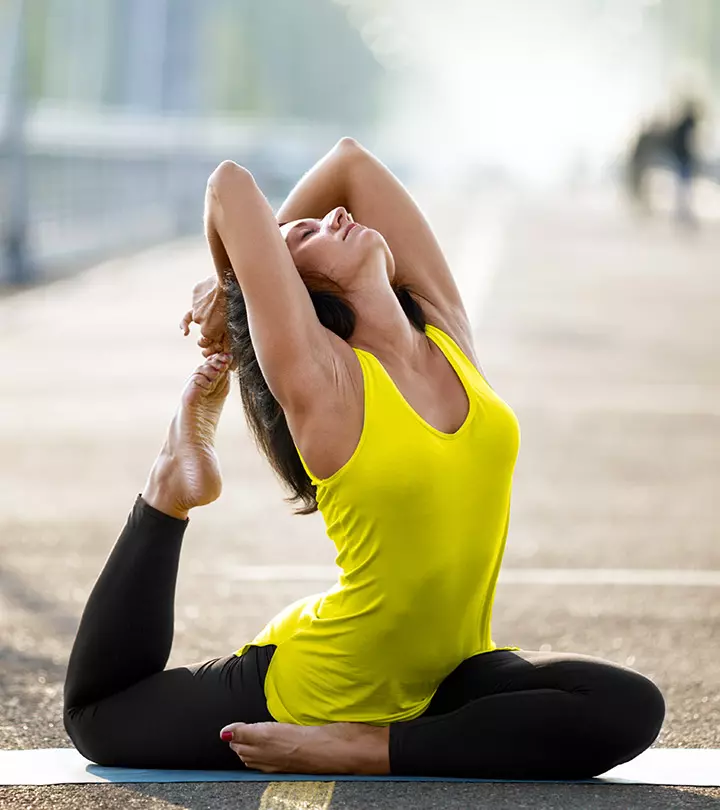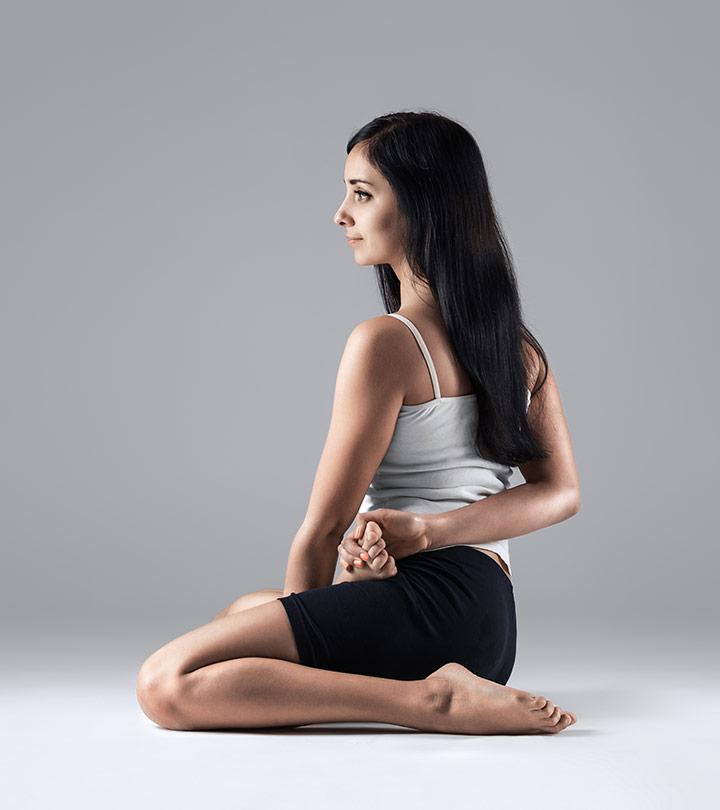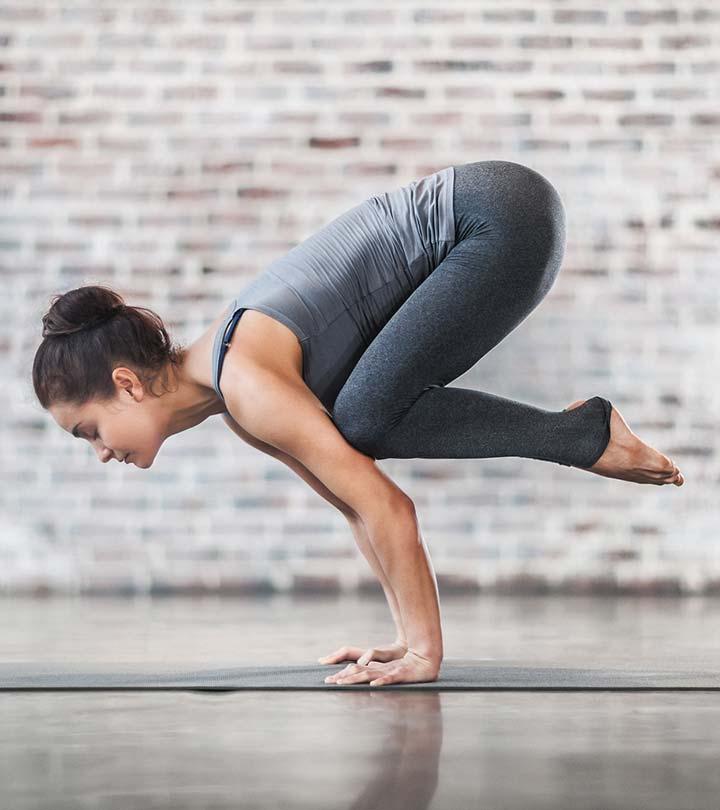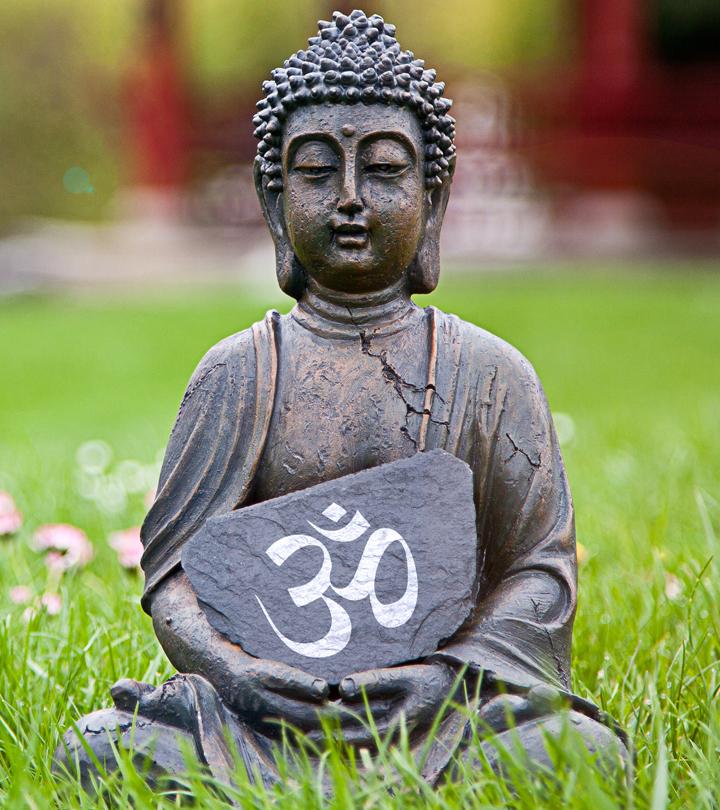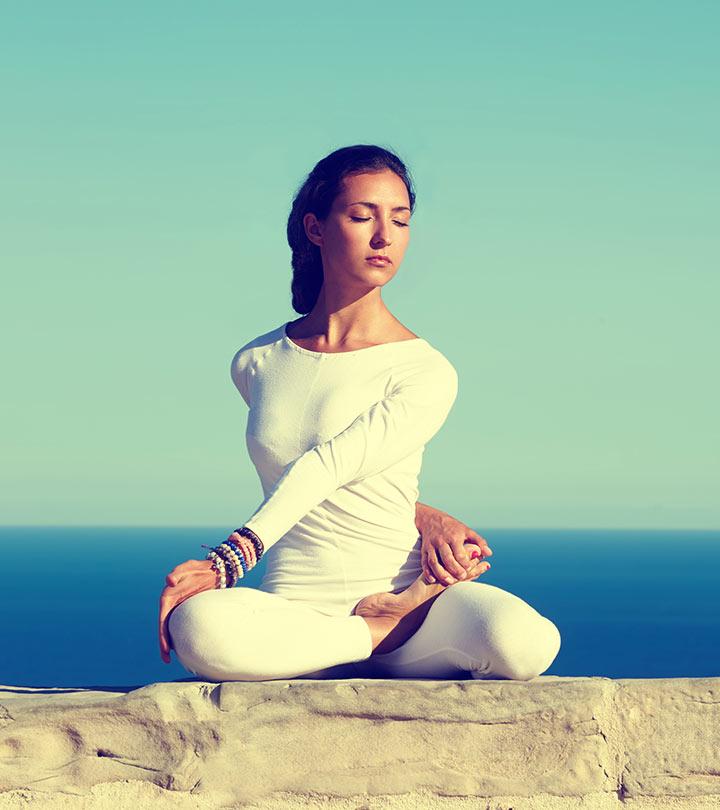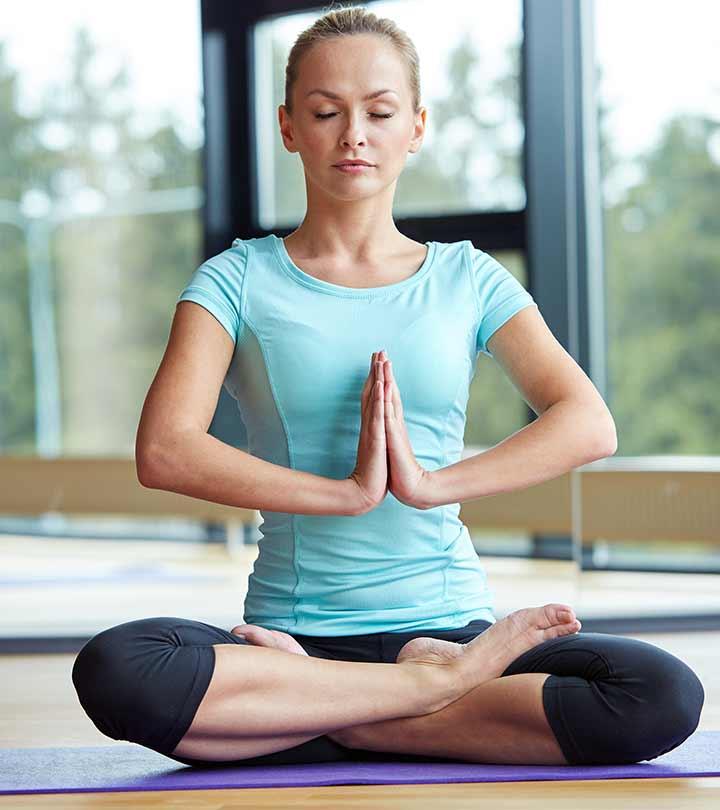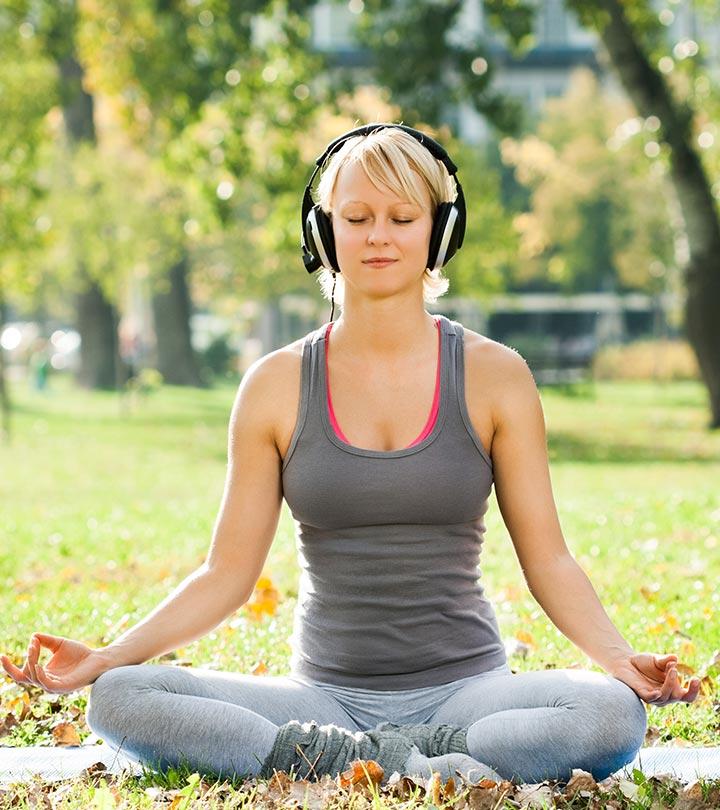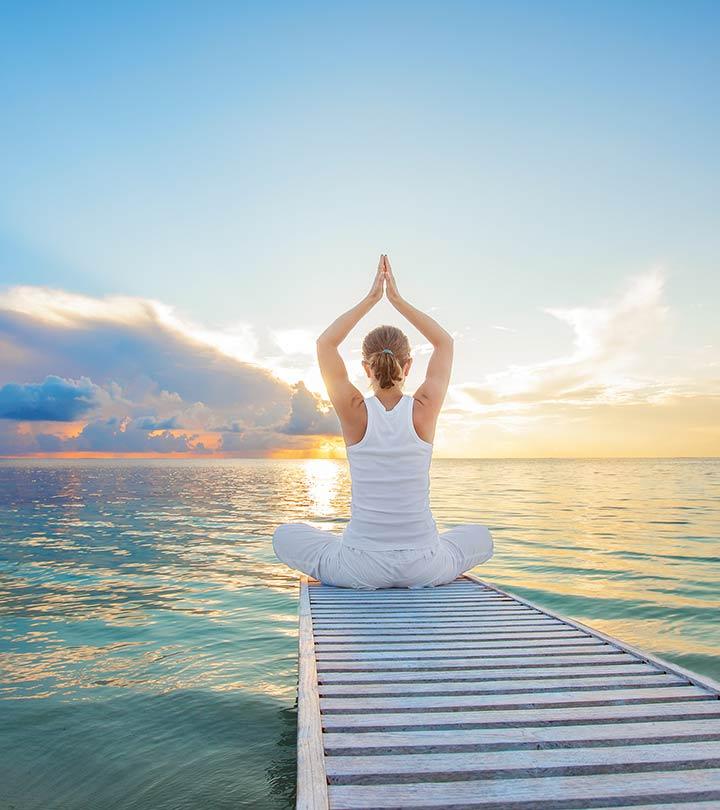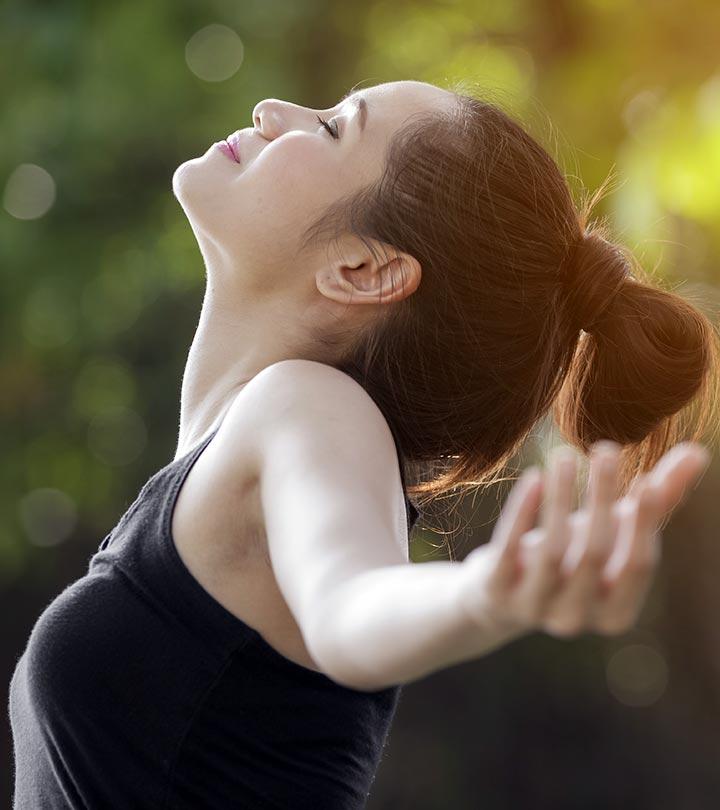How To Do The Virabhadrasana 1 And What Are Its Benefits

Image: iStock
Virabhadrasana I or Warrior 1 Pose is an asana commemorating the exploits of a mythical warrior. Sanskrit: वीरभद्रासन; Vira – Hero, Bhadra – Friend, Asana – Pose. Pronounced as veer-ah-bah-DRAHS-anna
Virabhadra is a mythological character created by Lord Shiva, and this pose derives its name from there. The Virabhadrasana I is an asana honoring the feats of a legendary warrior. Hence, it is also called the Warrior 1 pose. This asana is considered to be one of the most graceful postures in yoga, and it adds a whole lot of beauty to the workout.
Everything You Need To Know About Virabhadrasana 1
- What You Should Know Before You Do This Asana
- How To Do The Virabhadrasana I
- Precautions And Contraindications
- Beginner’s Tips
- Advanced Pose Alterations
- Benefits Of Virabhadrasana I
- The Science Behind The Warrior Pose 1
- The Mythology Behind Virabhadrasana I
- Preparatory Poses
- Follow-Up Poses
What You Should Know Before You Do This Asana
Yoga is best practiced early in the morning, but in case you are not an early riser, the next best time to practice yoga is in the evening.
It is essential that your stomach and your bowels are empty before you do the Virabhadrasana I. Ensure a gap of four to six hours between your meals and practice so that the food is completely digested and you are energetic for the workout.
Level: Beginner
Style: Vinyasa
Duration: 20 seconds on each leg
Repetitions: 1
Strengthens: Ankles, Thighs, Shoulders, Calves, Arms, Back
Stretches: Ankles, Navel, Groin, Thighs, Shoulders, Lungs, Calves, Thorax, Neck
How To Do The Virabhadrasana
1. Stand erect and spread your legs about three to four feet apart. Your right foot should be in the front and the left foot behind.
2. Now, turn your right foot outwards by 90 degrees and the left by 15 degrees, making sure the heel of the right foot is perfectly aligned with the center of the left foot.
3. Lift your arms sideways until they reach the height of your shoulders. Your arms must be parallel to the ground, and your palms should be facing upwards.
3. Exhale and bend your right knee, such that your knee and ankle form a straight line. Make sure that your knee does not go ahead of your ankle.
4. Now turn your gaze to your right.
5. As you move into the pose, stretch your arms further and join your palms above your head. Look at your palms. Gently push your pelvis down.
6. Hold the pose with the same determination as a warrior, and wear a smile on your face. Breathe normally and keep going down.
7. Inhale and come up.
8. Exhale and gently bring your hands down from the sides.
9. Repeat this pose on the left side, with your left leg in the front and the right one at the back.
Precautions And Contraindications
It is important to consult a doctor before you practice this asana, especially if you have spinal problems or have just recovered from a chronic illness.
If you have shoulder pains, raise your arms and leave them parallel to each other instead of holding them above your head.
If you have neck problems, you should not look up at your hands after you stretch them.
Pregnant women will benefit from this asana, especially if they are in their second and third trimester, but only if they have been practicing yoga regularly. This must be done under the guidance of their trainer and with a doctor’s permission.
If you suffer from knee pain or have arthritis, you can use the support of a wall to do this asana.
People suffering from heart problems or high blood pressure should avoid this asana.
Beginner’s Tip
Usually, when the front knee is bent into the pose, beginners tend to tip their pelvis forward. This duck-tails the coccyx and causes the lower back to compress itself. Before you bend your knee, lift your pubis towards the navel. Then, lengthen the tail to the floor. When you bend your knee, go on lifting and descending these two bones, ensuring that the top rim of the pelvis is as parallel as it can be to the floor.
Advanced Pose Alterations
For Imbalance
If you feel you cannot hold your balance in this asana, create a stable base by placing the front foot a few inches out from the midline of your body.
Back Foot Lifting
It might help if you place a block below your heel to press down or press your heel against a wall. This will help you stabilize.
Strained Back Knee
If your back knee feels tense, involve the muscles in your thighs such that they lift the kneecap, while the back leg is absolutely straight.
Lower Back Pain
If you suffer from lower back problems, gently bend forward from the hip such that your torso is diagonally lengthened, and your abdomen forms support.
This pose can also be performed with the arms in different positions. You could either clasp it behind your torso or hold it at your hips, apart from holding it at the shoulder level or holding it above your head.
Benefits Of Virabhadrasana I
These are some amazing Virabhadrasana 1 benefits:
1. This asana is known to strengthen and tone the lower back, the arms, and the legs.
2. It helps to stabilize and balance the body as it increases the stamina.
3. It is also a great asana for those with desk or sedentary jobs. It stimulates the metabolism as well as restores the spine.
4. This asana helps ease out frozen shoulders.
5. It also helps release stress from the shoulders almost immediately.
6. This asana relaxes the mind and the body, spreading the notion of peace, courage, grace, and a sense of auspiciousness.
The Science Behind The Warrior Pose I
This asana is an extremely vigorous standing exercise that requires you to focus. It is a challenging asana that entails a whole lot of multitasking. The many actions you take on as you get into this position pull you in opposite directions. You lift up while grounding yourself, and you press forward while you reach backward.
Though this asana is a battle in itself, mastering it is rewarding. All the muscles in your legs, core, and arms are strengthened and toned. Your chest is expanded, your lungs are opened up, and you feel a sense of vigor.
Since there are so many different actions as you take on the pose, it is advisable to focus on any one of them each time you practice this asana.
Practicing the Warrior I asana will show you your strengths and weaknesses. It will allow you to accept the obstacles your body presents, and with time, you will become stable, aware, and gain enough skill to move deeper into this powerful pose.
The Mythology Behind Virabhadrasana I
The story goes like this. There was a king called Daksha who didn’t invite his daughter Sati and her husband Shiva to a yagna (sacrifice ritual). She couldn’t deal with the humiliation and insult, so she barged into the venue, walked into the fire, and burned in it. When her husband arrived at the venue and found his beloved wife dead, he was saddened and enraged. He plucked out a strand of his hair and beat it to the ground, from which rose a powerful warrior. He named this warrior Virabhadra or hero-friend, and sent him to destroy Daksha and all his guests present at the yagna.
The Virabhadrasana I is the first aspect of Virabhadra’s arrival, as he thrusts his way up from below the earth.
Preparatory Poses
- Supta Virasana
- Upavistha Konasana
- Adho Mukha Svanasana
- Utthita Parsvakonasana
- Supta Padangusthasana
- Parivrtta Parsvakonasana
- Virabhadrasana II
- Vrikshasana
- Gomukhasana
- Virasana
Follow-Up Poses
Virabhadrasana III
This is one power packed asana that works on your mind, body, and might. It has much history and science behind it. It might look easy, but is extremely challenging. Taking on this challenge and achieving it is something that you should strive for as you indulge in this asana.
Do try practicing virabhadrasana 1 at home and check out the difference! Don’t forget to leave us a comment. Happy practicing!


